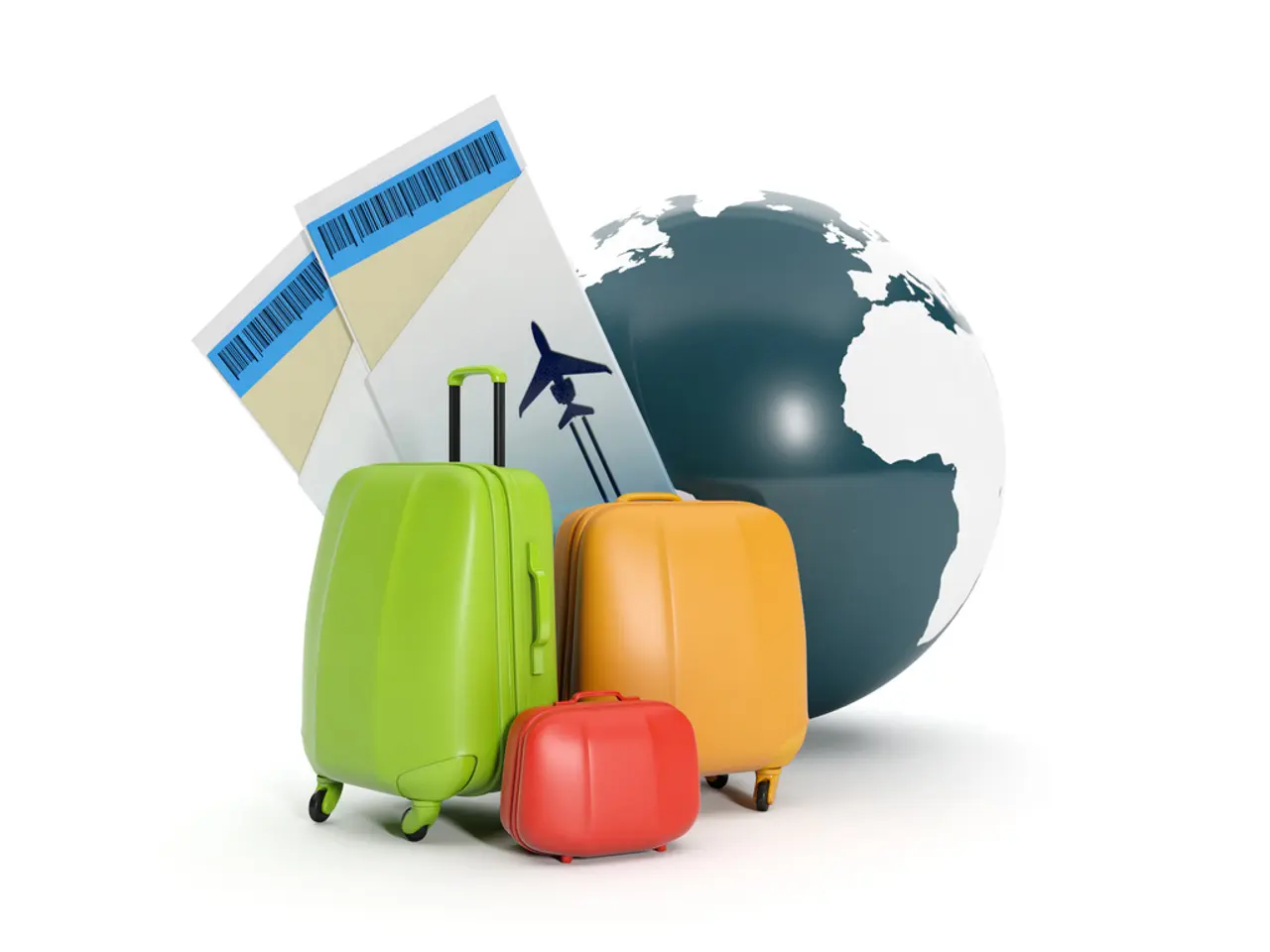Passengers on flights in Latin America now have the option to share AirTags for real-time baggage monitoring
LATAM Airlines, the largest carrier in Latin America, has taken a significant step forward in improving the travel experience for its passengers by implementing a new luggage tracking feature. This feature allows passengers to share their luggage's real-time location with airline staff using Apple's AirTag and the "Share Item Location" tool within the Find My app.
The adoption of this technology by LATAM, along with other major airlines like United and Singapore Airlines, suggests a universal logic and widespread adoption in the airline industry. This new feature is expected to help reduce the number of mishandled bags, a common issue that plagues the airline industry, improving the overall travel experience for passengers.
Interestingly, LATAM passengers can use AirTags by placing them in their luggage and then tracking baggage via the Find My app on their Apple devices. The new feature allows airline staff to see exactly where the luggage is, whether it's still at the departure airport or halfway across the continent.
However, the majority of LATAM's passengers can't currently use the AirTag tracking system due to low iPhone adoption in Latin America. This raises questions about the potential integration of additional tracking tags, such as those from brands like Tile, Chipolo, and Samsung, that are compatible with Android's "Find My Device" network.
As of August 2025, LATAM supports Apple's AirTag luggage tracking program, but there is no public information or official indication that LATAM integrates third-party tracking devices like Samsung's SmartTag with Android's "Find My Device" network for baggage tracking.
The new technology puts more control back in the hands of passengers, as baggage tracking has traditionally relied on barcodes and routing systems that break down when a bag leaves the conveyor belt. By using tracking devices, passengers can potentially provide airlines with real-time knowledge of luggage location before passengers start worrying about it.
The International Air Transport Association estimates that 33 million bags are mishandled globally each year. If LATAM sees anything close to United's recovery rate improvement, the payoff for adopting the luggage tracking feature is clear, even if it only applies to a slice of its customer base.
It's worth noting that the link generated for the luggage's location expires after a week or once the luggage is recovered, limiting the privacy trade-off. As more airlines adopt this technology, it's likely that we'll see improvements in baggage handling and a smoother travel experience for passengers. However, the question of compatibility with Android devices remains unanswered for LATAM and many other airlines.
Travelers using smartphones, such as those from Apple, can now enhance their lifestyle during travel by taking advantage of LATAM Airlines' new luggage tracking feature, which is available through the Find My app and AirTag. With this technology, passengers can stay updated on their luggage's location, whether it's still at the departure airport or en route, reducing worries about mishandled bags. However, the current limitation lies in the low iPhone adoption in Latin America, which prevents the majority of LATAM passengers from using the AirTag tracking system. This raises questions about potential integration of additional tracking tags that are compatible with Android devices for a more inclusive solution.




